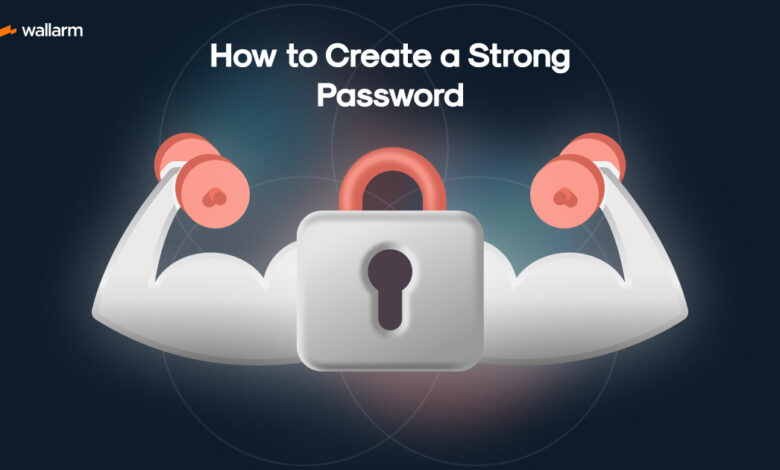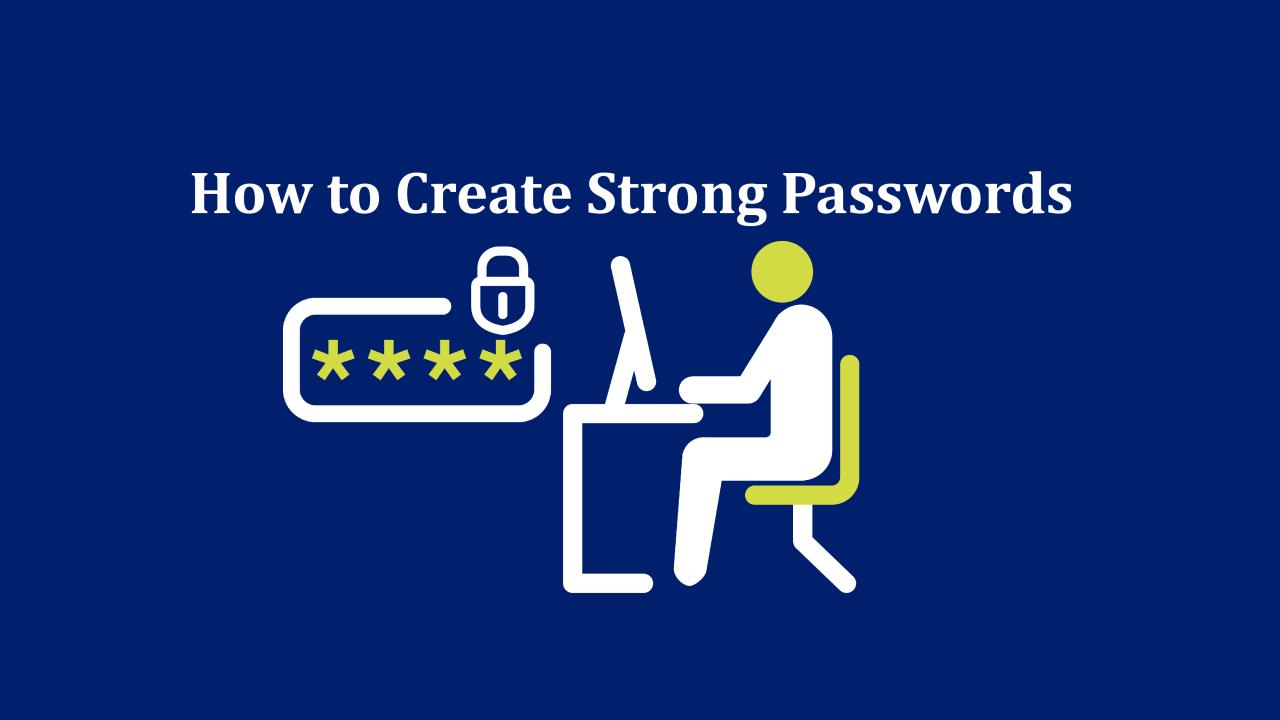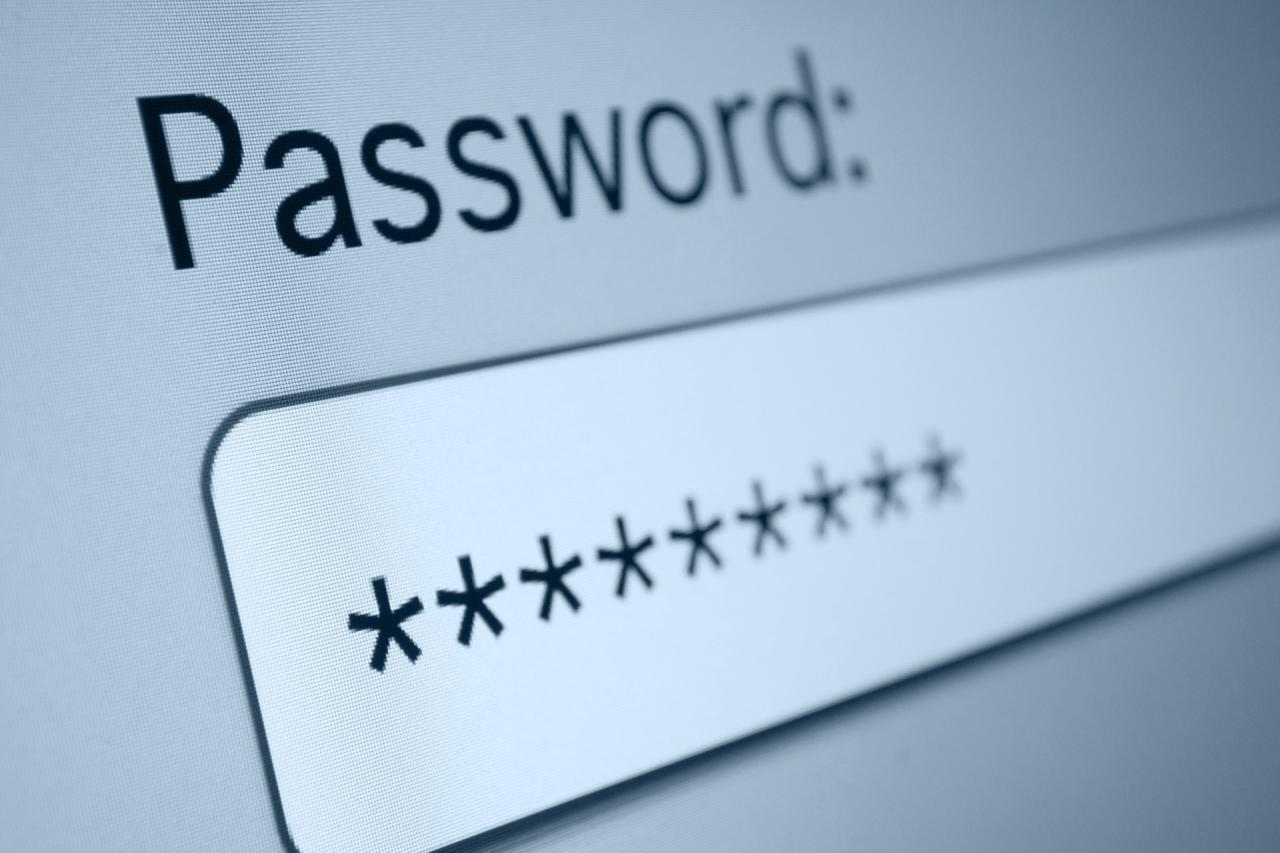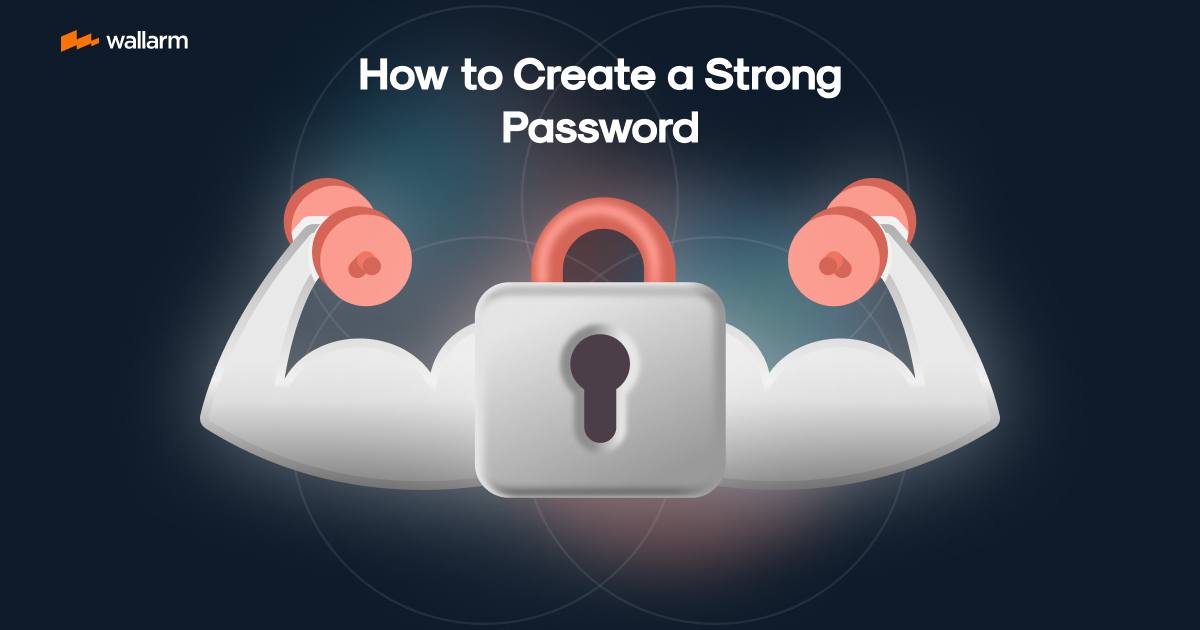
How to Craft a Password Meticulously
How to craft a password meticulously isn’t just about picking a random string of characters; it’s about building an impenetrable fortress around your digital life. We’ll delve into the science of strong passwords, exploring length, complexity, and the sneaky ways hackers try to crack them. Get ready to upgrade your password game and leave those digital burglars in the dust!
This post will guide you through creating truly secure passwords, covering everything from understanding password length and character types to employing smart password management strategies and utilizing two-factor authentication. We’ll also tackle common password pitfalls and explain how to avoid them, ultimately empowering you to protect your online accounts effectively.
Password Length and Complexity

Choosing a strong password is crucial for online security. The strength of your password isn’t just about using special characters; it’s a combination of length and complexity. Longer passwords, even if they seem simple, are exponentially harder to crack than shorter, more complex ones. Let’s explore this vital relationship.Password length directly impacts the time it takes for a computer to guess it.
Each additional character significantly increases the number of possible combinations. This exponential growth makes brute-force attacks (trying every possible combination) increasingly impractical for longer passwords. Complexity, on the other hand, adds another layer of protection by incorporating different character types, making it more difficult for attackers to predict the password structure.
Password Length and Strength
The relationship between password length and security is exponential. A longer password, even with only lowercase letters, is significantly stronger than a shorter password using a mix of uppercase, lowercase, numbers, and symbols. For example, a ten-character password consisting only of lowercase letters offers far greater security than an eight-character password with mixed character types. This is because the number of possible combinations increases dramatically with each added character.
A longer password simply presents more hurdles for hackers attempting to crack it.
Examples of Strong and Weak Passwords
Let’s look at some examples to illustrate this point:
Weak Passwords:
- password123 (short, common word, predictable sequence)
- qwerty (easily guessable keyboard sequence)
- 12345678 (simple numerical sequence)
Strong Passwords:
- P@$$wOrd123! (longer, mixed case, numbers, and symbols)
- Tr0ub4dor&3l3phant (longer, mixed case, numbers, and unusual character substitutions)
- MyS3cr3tP@$$wOrd42 (longer, incorporates personal information in a complex way)
Note that even strong passwords should be unique and not reused across different accounts.
Password Strength Table
This table illustrates the relative strength of passwords based on length and character types. Remember, this is a relative measure; real-world password cracking depends on many factors, including the attacker’s resources and techniques.
| Character Types | Length | Strength Rating | Example |
|---|---|---|---|
| Lowercase only | 8 | Weak | example |
| Lowercase only | 12 | Moderate | longerexample |
| Lowercase, uppercase, numbers | 10 | Strong | ExAmPl31234 |
| Lowercase, uppercase, numbers, symbols | 16 | Very Strong | ExAmPl3!@#$1234 |
Character Types and Their Importance
Crafting truly robust passwords goes beyond just length; the diversity of characters you use is equally crucial. Think of it like building a fortress – a long wall made of only one type of brick is far easier to breach than a wall incorporating various materials, shapes, and strengths. Similarly, a password composed solely of lowercase letters is significantly weaker than one that cleverly mixes uppercase and lowercase letters, numbers, and symbols.Including a variety of character types dramatically increases the complexity and, consequently, the time it takes for a brute-force attack (an automated attempt to guess the password by trying all possible combinations) to succeed.
Each added character type exponentially expands the number of possible password combinations, making it exponentially more difficult for hackers to crack.
Uppercase and Lowercase Letters
The difference between “password” and “Password” might seem insignificant, but it represents a doubling of the potential character set. Using both uppercase and lowercase letters significantly increases the number of possible combinations, making your password much stronger. For instance, if you’re using only lowercase letters, there are 26 possibilities for each character position. Adding uppercase letters increases this to 52 possibilities.
Numbers
Adding numbers to your password further enhances its strength. Consider the difference between “password” and “password123”. The inclusion of numbers significantly expands the potential character set, adding another layer of complexity that makes brute-force attacks considerably more challenging. The more numbers you incorporate, the more secure your password becomes.
Symbols
Symbols, often overlooked, are a vital component of strong passwords. These characters, such as !@#$%^&*(), add a substantial layer of complexity. They are not included in standard character sets used in many brute-force attacks, significantly increasing the time required to crack the password. It’s important to choose symbols that are easy for you to remember, while still being difficult for others to guess.
Effective Incorporation of Diverse Character Types
The key is to integrate these different character types in a way that is both memorable and secure. Avoid obvious patterns, such as repeating numbers or using consecutive letters. A good strategy is to create a memorable phrase and then transform it into a password by replacing letters with numbers or symbols. For example, “MyFavoriteDogIsFluffy” could become “MyF@v0riteD0g!sFluffy”.
Remember to use a different symbol for each instance of a repeated character, as using the same symbol repeatedly makes it easier to guess.
Symbol Categories and Examples
It’s beneficial to understand the different types of symbols available and how to incorporate them effectively.
- Punctuation Marks: !, ?, ., ;, :, -, _ These are readily available and easily integrated.
- Mathematical Symbols: +, -,
-, /, =, %, <, > These can be easily remembered if you connect them to mathematical concepts you know. - Currency Symbols: $, €, £, ¥ These are distinctive and less commonly used in passwords.
- Brackets and Parentheses: (, ), , , [, ] These can be easily incorporated into a memorable phrase.
Remember, the goal is not to create the most complex password imaginable, but to create one that is both secure and memorable for you. A password that is too complex to remember will likely be written down, negating its security.
Avoiding Common Patterns and Predictable Choices

Creating strong passwords isn’t just about length and complexity; it’s about avoiding predictable patterns that hackers can easily exploit. Using easily guessable information dramatically weakens your security, making your accounts vulnerable to unauthorized access. Understanding these patterns and actively avoiding them is crucial for maintaining a robust online security posture.
The dangers of using easily guessable information are significant. Think about it: your birthday, your pet’s name, your spouse’s name, even your favorite sports team – these are all pieces of information readily available to someone trying to guess your password. Hackers often use readily available information from social media profiles, public records, and data breaches to create lists of potential passwords, and these personal details form the foundation of many successful attacks.
This information, combined with common password patterns, significantly reduces the time and effort needed to crack your password, making your accounts a prime target.
Easily Guessable Information Weakens Security
Using personal information like birthdays, anniversaries, names (including variations like nicknames), addresses, phone numbers, and pet names in passwords is a major security risk. These are often easy to find through social media or other online resources. A password based on “MyDogFido123” is significantly weaker than a randomly generated string of characters. The inclusion of personal details provides a clear path for hackers to exploit, reducing the number of combinations they need to try before gaining access.
The more personal information you incorporate, the easier it becomes for an attacker to guess your password. For example, a password like “JohnDoe1985” is extremely vulnerable because it combines a common name, “John Doe,” with a readily available birth year.
Common Password Patterns and Their Avoidance
Many people fall into predictable patterns when creating passwords. These patterns make passwords easier to guess, even if they are long and include various character types. Common patterns include sequential numbers (123456), repeating characters (aaaaaaa), keyboard patterns (qwerty), and simple word combinations (password123). Avoiding these patterns requires a conscious effort to generate truly random passwords. Instead of relying on easily remembered sequences, use a password manager to generate complex, unique passwords for each account.
This ensures that even if one account is compromised, your other accounts remain secure. Password managers not only generate strong passwords but also securely store them, relieving you of the burden of remembering dozens of complex passwords.
Personal Information versus Random Character Combinations
The security difference between passwords using personal information and those using random character combinations is vast. Passwords based on personal information are inherently weaker because they rely on readily available data. Random character combinations, on the other hand, offer exponentially greater security. A truly random password of sufficient length and complexity is incredibly difficult, if not impossible, to guess using brute-force attacks.
This is because the number of possible combinations is astronomically large, making it computationally infeasible to try every possibility. The security gap is so significant that relying on personal information in any password, even as a small component, dramatically reduces its overall strength.
Password Management Strategies
So, you’ve crafted the perfect password – long, complex, and unique. But what about managing dozens, or even hundreds, of these meticulously created passwords? This is where effective password management strategies become crucial. Failing to properly manage your passwords negates all the effort you put into creating them in the first place. Let’s explore some common approaches.
Several methods exist for managing your passwords, each with its own set of advantages and disadvantages. Choosing the right approach depends heavily on your individual needs and technical comfort level. Consider factors like the number of accounts you manage, your technological skills, and your tolerance for risk when making your decision.
Password Management Techniques Compared, How to craft a password meticulously
The table below compares the most popular password management techniques: password managers and physical notebooks. While both have their place, understanding their strengths and weaknesses is key to selecting the best approach for you.
| Feature | Password Manager | Physical Notebook |
|---|---|---|
| Security | High, if using a strong master password and reputable software. Offers features like two-factor authentication. | Low to moderate. Susceptible to theft, loss, and unauthorized access. |
| Convenience | Very high. Automates logins and password generation. | Moderate. Requires manual entry of passwords. |
| Cost | Varies. Many offer free plans with limited features, while premium plans offer enhanced security and functionality. | Low. Only requires the cost of a notebook and pen. |
| Accessibility | Accessible from multiple devices if properly configured. | Limited to the physical location of the notebook. |
Secure Password Generation Process
A truly secure password generation process relies on unpredictability and complexity. Avoid using easily guessable patterns or personal information. Instead, leverage randomness to create truly unique and strong passwords.
Here’s a step-by-step process for generating secure passwords:
- Determine Length: Aim for at least 16 characters. Longer passwords are exponentially more difficult to crack.
- Choose a Character Set: Include uppercase and lowercase letters, numbers, and symbols. A wider variety of characters increases complexity.
- Use a Random Password Generator: Many password managers and online tools offer robust random password generators. These tools ensure a high degree of randomness, eliminating human bias.
- Avoid Personal Information: Never use personal details like birthdays, names, or addresses in your passwords.
- Test the Password: After generating a password, use a password strength checker to assess its robustness. This provides an independent verification of your password’s security.
- Store Securely: Use a reputable password manager or, if using a physical notebook, keep it in a secure location.
Remember: The strength of your password is only as good as your management of it.
Understanding Password Cracking Techniques
Creating strong passwords is only half the battle; understanding how attackers try to crack them is crucial for effective security. Knowing the methods used helps you build even more resilient defenses. This section explores common password cracking techniques and how password complexity and length influence their success.
Password cracking relies on exploiting weaknesses in password creation and management. Attackers use various methods, ranging from simple guessing to sophisticated automated attacks, to gain unauthorized access to accounts. The effectiveness of these attacks depends heavily on the strength of the passwords themselves.
Brute-Force Attacks
Brute-force attacks are the most straightforward method. They involve systematically trying every possible combination of characters until the correct password is found. This is computationally expensive, especially with longer and more complex passwords. For example, a six-character password using only lowercase letters has 26 6 (approximately 308 million) possibilities. Increasing the length to eight characters dramatically increases the possibilities to 26 8 (approximately 208 billion).
The time required for a brute-force attack grows exponentially with password length and complexity.
So, you’re building super-secure apps, right? Crafting a meticulously strong password is key – think long, complex, and unique. This is especially important when you’re working on projects like those discussed in this great article on domino app dev the low code and pro code future , where security is paramount. Remember, a weak password can compromise even the most robust application architecture; so always prioritize password strength.
Dictionary Attacks
Dictionary attacks are more targeted than brute-force attacks. They utilize lists of common passwords, words, and phrases (dictionaries) to guess passwords. These lists often include variations like common misspellings, substitutions of numbers for letters (e.g., “p@ssword”), and common names and dates. The success of a dictionary attack depends on the predictability of the password chosen. A password based on a common word or phrase from a dictionary is highly vulnerable to this type of attack.
Attackers often use specialized software to automate these attacks and test many password variations simultaneously.
How Password Complexity Mitigates Attacks
Password complexity, incorporating uppercase and lowercase letters, numbers, and symbols, significantly increases the time and resources needed for both brute-force and dictionary attacks. A password like “P@$$wOrd123!” is far more resistant than “password123”. The inclusion of diverse character types vastly expands the number of possible combinations, making it exponentially harder for brute-force attacks to succeed within a reasonable timeframe.
Similarly, the use of uncommon words and phrases makes dictionary attacks less effective.
Impact of Password Length on Brute-Force Attack Time
Password length is a critical factor in the effectiveness of brute-force attacks. Each additional character exponentially increases the number of possible combinations. A simple calculation demonstrates this: an eight-character password using only lowercase letters has 208 billion possibilities, while a ten-character password using the same character set has 14 trillion possibilities. This significant increase in possibilities makes a brute-force attack impractical for longer passwords, even with powerful computing resources.
This makes it a much more effective defense strategy compared to simply increasing complexity without also increasing length.
Regular Password Updates and Rotation
Regularly changing your passwords is a crucial element of a robust security strategy. While creating strong, unique passwords is the first line of defense, the longevity of those passwords directly impacts their effectiveness. Over time, the risk of compromise increases, whether through data breaches, phishing attacks, or sophisticated cracking techniques. Regular password updates mitigate this risk, forcing attackers to constantly adapt and reducing the window of vulnerability.The frequency of password changes should be tailored to the sensitivity of the account.
Accounts with sensitive information, such as banking, email, or social media, require more frequent updates than those with less sensitive data. Failing to update passwords regularly increases the likelihood of unauthorized access and potential harm.
Password Update Schedules Based on Sensitivity
A well-defined schedule ensures consistent password rotation. Here’s a suggested approach:
- High-Sensitivity Accounts (Banking, Email, Social Media): Change passwords every 90 days. These accounts often hold significant personal information and financial details, making them prime targets for attackers. The shorter rotation period minimizes the impact of a potential breach.
- Medium-Sensitivity Accounts (Online Shopping, Streaming Services): Change passwords every 6 months. While these accounts don’t hold the same level of sensitive data as high-sensitivity accounts, they still warrant regular updates to prevent unauthorized access and potential financial loss or identity theft.
- Low-Sensitivity Accounts (Forums, Gaming Platforms): Change passwords every 12 months. These accounts generally hold less sensitive information, but updating them annually still maintains a reasonable level of security.
Strategies for Remembering Updated Passwords
Remembering numerous updated passwords can be challenging without compromising security. Relying on easily guessable patterns or writing them down is risky. Instead, consider these options:
- Password Managers: These tools securely store and manage your passwords, generating strong, unique passwords for each account and auto-filling login forms. Reputable password managers use robust encryption to protect your data. Choosing a reputable manager is crucial to ensure your passwords remain safe.
- Password Hints (Used Cautiously): While using hints is not ideal, if you must, avoid obvious clues like birthdays or pet names. Instead, use a mnemonic device that is easily recalled by you but difficult for others to decipher. For example, instead of “MyDogSpot,” use a more complex phrase related to a personal memory or inside joke.
- Periodic Review and Refresh: Schedule regular reviews of your passwords. This allows you to identify and update any passwords that might be compromised or outdated, ensuring you maintain a high level of security across all your accounts.
Two-Factor Authentication (2FA) and Multi-Factor Authentication (MFA)
In today’s digital landscape, passwords alone are no longer sufficient to safeguard our online accounts. The increasing sophistication of cyber threats necessitates a more robust approach to security, and that’s where Two-Factor Authentication (2FA) and Multi-Factor Authentication (MFA) come in. These methods add an extra layer of protection, significantly reducing the risk of unauthorized access, even if your password is compromised.These authentication methods work by requiring users to provide two or more forms of verification before granting access.
This multi-layered approach makes it exponentially harder for attackers to gain entry, even if they manage to obtain your password through phishing or other malicious means. The benefits are substantial, ranging from increased account security to greater peace of mind.
Types of 2FA/MFA Methods
Several different methods exist for implementing 2FA/MFA, each offering varying levels of security and convenience. Choosing the right method often depends on the specific platform and the user’s comfort level with technology.
- Something you know (password): This is the traditional method, but in the context of 2FA/MFA, it’s combined with another factor. For example, you might enter your password and then a one-time code generated by an authenticator app.
- Something you have (authenticator app): This involves using a mobile authenticator app like Google Authenticator or Authy to generate time-sensitive one-time passwords (TOTP). These apps create unique codes that change every few seconds, making it extremely difficult for attackers to intercept and use.
- Something you are (biometrics): Biometric authentication uses unique physical characteristics, such as fingerprints, facial recognition, or iris scans, to verify your identity. This is often integrated into smartphones and laptops for convenient access.
- Something you do (gesture recognition): This involves performing a specific gesture, such as drawing a pattern on a screen, to authenticate. While less common than other methods, it can be a useful additional layer of security.
- Somewhere you are (location-based authentication): This method verifies your location using GPS or IP address to confirm that access attempts are originating from a trusted location. This is often used in conjunction with other methods.
Implementing 2FA/MFA on Various Platforms
Enabling 2FA/MFA is typically straightforward, although the exact process varies depending on the specific service or platform. Most major online services, including email providers (Gmail, Outlook), social media platforms (Facebook, Twitter), and banking institutions, offer 2FA/MFA as a security option.Generally, the process involves navigating to the account settings, locating the security section, and selecting the desired 2FA/MFA method. The platform will then guide you through the setup process, which often involves scanning a QR code with your authenticator app or entering a verification code sent to your phone or email.
For example, on Google accounts, you can find the 2-Step Verification setting within the security settings. Similarly, Facebook offers a similar setting under its account security options. It’s crucial to carefully follow the instructions provided by each platform to ensure proper implementation. Remember to keep your authenticator app secure and backed up, as losing access to it can lock you out of your accounts.
Visual Representation of Password Strength

Understanding password strength isn’t always intuitive. While we know longer, more complex passwords are better, visualizing this concept can significantly improve comprehension and encourage better password habits. A visual representation can bridge the gap between abstract security concepts and practical application, making password security more accessible to everyone.A simple, effective visual could be a bar graph representing password strength.
The horizontal axis would represent different password types, while the vertical axis displays a numerical score representing strength (0-100, for example).
Password Strength Bar Graph
Imagine a bar graph with different password categories along the horizontal axis: “Weak,” “Medium,” “Strong,” and “Very Strong.” Each category would have a corresponding bar extending vertically to a height reflecting its strength score. For instance, “Weak” (e.g., “password123”) might have a bar reaching only 10 on the 100-point scale, while “Very Strong” (e.g., a long, complex password with uppercase, lowercase, numbers, and symbols) would reach nearly The color of the bars could also be used to reinforce the strength level; perhaps progressing from red (weak) to green (strong).
This clear visual immediately communicates the relative security of different password choices. Adding a brief description under each bar (e.g., “Weak: simple words or easily guessable sequences”) would further enhance understanding.
Illustrative Examples in the Bar Graph
To make this even clearer, let’s populate the bar graph with specific examples. The “Weak” bar could represent a password like “123456,” showing a very short bar. “Medium” could showcase a password like “MyPassword1!”, reaching a mid-range height on the graph. “Strong” could feature a password like “P@$$wOrd1234!”, extending the bar significantly higher. Finally, “Very Strong” could illustrate a password like “Tr0ub4dor&G4l@xy7,” reaching almost the top of the graph.
These concrete examples, paired with the visual representation, make the concept of password strength instantly understandable.
Conclusion
Crafting meticulously strong passwords is an ongoing process, not a one-time task. By understanding password vulnerabilities, employing diverse character types, and regularly updating your credentials, you significantly reduce your risk of falling victim to cyberattacks. Remember, a strong password is your first line of defense in the digital world – invest the time, it’s worth it!
FAQ Overview: How To Craft A Password Meticulously
What’s the best password length?
Aim for at least 12 characters, but longer is always better. The longer the password, the more time it takes for a brute-force attack to crack it.
Should I use a password manager?
Yes! Password managers securely store and manage your passwords, eliminating the need to remember numerous complex passwords. Just make sure to choose a reputable one and protect its master password.
How often should I change my passwords?
Change passwords for high-security accounts (banking, email) every 3-6 months. For less sensitive accounts, every 6-12 months is usually sufficient.
What if I forget my password?
Most services offer password recovery options, usually involving email or security questions. Set up these options beforehand!
Are password hints helpful?
No, password hints are often easily guessable and shouldn’t be used. Instead, rely on strong, randomly generated passwords.





